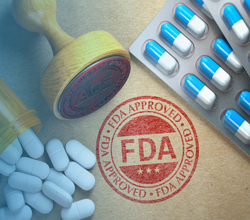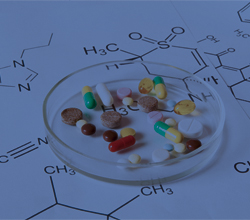
Auditing Failure or Process Deviation Investigations
 Michelle Sceppa
Michelle Sceppa
 42 Min
42 Min
Product Id: 701128
This FDA Inspection training will examines the audit process and how to manage Process Deviation Investigations.

Implementing Human Factors in Manufacturing
 Ginette M Collazo
Ginette M Collazo
 90 Min
90 Min
Product Id: 706999
This course on Implementing Human Factors in Manufacturing provides a comprehensive overview of how to integrate human factors principles into manufacturing processes to reduce errors, improve safety and quality, and enhance operational efficiency. Participants will learn about the types and causes of human errors, ergonomic design principles, human-machine interface optimization, and effective strategies for fostering a culture of safety, quality, and continuous improvement. Through interactive workshops, case studies, and practical applications, attendees will gain the tools needed to conduct human factors assessments, design effective training programs, and develop actionable plans for sustainable improvement in their organizations.

Design History Files and Technical Files under US FDA and EU MDD
 John E Lincoln
John E Lincoln
 60 Min
60 Min
Product Id: 701175
This medical device compliance training will be helped to see how to understand the similarities and differences of these two complimentary documents and how to comply with the respective requirements and develop compliant files to address. The U.S. FDA’s Design Control requirements of the QS Regulation mandate the initiation and maintenance of a product Design History File for products to be marketed in the U.S. The European Union’s Medical Device Directive and a company’s Notified Body require a Technical Dossier or Technical File to show compliance to the Essential Requirements of the MDD and associated relavant standards for product to be CE-marked and marked in those countries (and others). Attendees will be helped to see how to understand the similarities and differences of these two complimentarty documents. Attendees will be further helped to comply with the respective requirements and develop compliant files to address either or both.

Practical Process Validations - Pack of Two Courses
 Vinny Sastri
Vinny Sastri

Product Id: 701157
This Validation training will explain the intent and importance of process validation. Process validation is critical to the production of high quality, consistent, safe and effective products and devices. Routine end-product testing alone is insufficient to assure the quality, safety and effectiveness of a product or device. It is important that the product acceptance criteria and specifications are quantified, and that the manufacturing processes are well characterized, understood, controlled and validated.

Practical Process Validation Part 2 - Qualification Steps, Process Controls and Sustainability Strategies
 Vinny Sastri
Vinny Sastri
 90 Min
90 Min
Product Id: 701124
This Process Validation training will detail the key qualification steps in process validation, the use of statistical methodology for sampling plans and acceptance criteria, how to handle deviations, elements of a good validation summary report. Process validation is critical to the production of high quality, consistent, safe and effective products and devices. Routine end-product testing alone is insufficient to assure the quality, safety and effectiveness of a product or device. It is important that the product acceptance criteria and specifications are quantified, and that the manufacturing processes are well characterized, understood, controlled and validated.

A Practical Approach to Microbial Data Deviation Investigations
 Frank Settineri
Frank Settineri
 90 Min
90 Min
Product Id: 701129
This Pharmaceutical training will utilize the Aseptic Processing Guidance as a centerpiece for conducting MDD investigations and will supplement its proposals with additional industry-standard best practices. The scope of the FDA guidance document on Out-Of-Specification results addresses analytical excursions, not microbiological excursions (Microbiological Data Deviations - MDD), although the approach for correcting them is the same: 1) Determine the root cause 2) Determine a corrective and/or preventative action and 3) Demonstrate that the corrective/preventative action was effective. Recent FDA warning letters cite microbiological excursions and many companies are unsure how to correct them since there are no definitive guidance’s. This webinar will utilize the Aseptic Processing Guidance as a centerpiece for conducting MDD investigations and will supplement its proposals with additional industry-standard best practices.

'Preventive Action' - the often ignored side of CAPA: Use FMEA to build preventive action into your CAPA program
 Holly Duckworth
Holly Duckworth
 60 Min
60 Min
Product Id: 701152
This Quality management training will show you how to use methods you probably already have in place to create effective preventive action. Linking these on-going tools to your CAPA program will increase the benefit. Many organizations focus on improving root cause problem solving and tracking issues and corrective actions. That’s a good beginning to a CAPA program. But many organizations don’t effectively implement Preventive Action.

International Financial Reporting Standards: The Basics
 Mike Morley
Mike Morley
 60 Min
60 Min
Product Id: 701161
This SOX compliance training will help you become acquainted with the latest information regarding IFRS and will include an opportunity to practice applying these standards.

ASTM (American Society for Testing and Materials) E2500: A New Approach to Validation
 Peter K Watler
Peter K Watler
 90 Min
90 Min
Product Id: 701165
This ASTM E2500 training will review how these ASTM (American Society for Testing and Materials) and ICH (International Conference on Harmonization) approaches can simplify the qualification process. Regulatory groups have responded by providing guidance documents such as ICH Q9: “Quality Risk Management” which encourages a level of risk appropriate to safety and efficacy and provides a toolbox of risk management methods. ICH Q8: “Pharmaceutical Development” encourages the use of scientific methods to mitigate risk through concepts such as Design Space, Quality by Design (QbD), Process Analytical Technology (PAT) and Continuous Verification.

Regulatory requirements on pharmaceutical packaging materials from US and EU points of view
 Paul Chen
Paul Chen
 90 Min
90 Min
Product Id: 701106
This pharmaceutical training provides a detail review and evaluation of Regulatory requirements on pharmaceutical packaging materials from US and EU. This pharmaceutical training provides a detail review and evaluation of the regulatory requirements for packaging operations including description, suitability, protection, safety, compatibility, performance, Quality Control, supplier, and stability.

Practical Process Validation Part 1 - Validation Planning, Prerequisites and Best Practices
 Vinny Sastri
Vinny Sastri
 90 Min
90 Min
Product Id: 701123
This Validation training will explain the intent and importance of process validation, the connectivity between design control and process validation and the key pre-requisites and steps in process validation. Process validation is critical to the production of high quality, consistent, safe and effective products and devices. Routine end-product testing alone is insufficient to assure the quality, safety and effectiveness of a product or device. It is important that the product acceptance criteria and specifications are quantified, and that the manufacturing processes are well characterized, understood, controlled and validated.

Clearing up Roles and Responsibilities in the GLPs
 Anne E Maczulak
Anne E Maczulak
 60 Min
60 Min
Product Id: 701092
This GLP (Good Laboratory Practices) webinar presents a straightforward summarization of the roles and responsibilities of all the people that contribute to a GLP study.

Understanding Financial Risk
 Stanley Epstein
Stanley Epstein
 90 Min
90 Min
Product Id: 707000
Understanding financial risk is crucial for anyone involved in managing assets or investments or running a business. Financial risk encompasses a wide array of threats that can significantly impact an individual's or organization's financial health. By exploring financial risk dynamics, one can better grasp how various factors such as market fluctuations, liquidity constraints, credit defaults, business disruptions, and investment uncertainties can lead to potential financial losses.

International Financial Reporting Standards for Fixed Assets - Property, Plant, and Equipment
 Mike Morley
Mike Morley
 60 Min
60 Min
Product Id: 701162
This SOX compliance training will help you become acquainted with the latest information regarding IFRS and will include an opportunity to practice applying these standards. International Financial Reporting Standards are changing how companies account for long-lived tangible assets on their financial statements.

Contamination Control 101 in Pharmaceutical, Biotech, and Medical Device Clean rooms
 Jim Polarine
Jim Polarine
 90 Min
90 Min
Product Id: 701023
This Contamination-Control training will provide valuable assistance to companies that need to validate their cleaning and disinfection programs.

Investigating Out of Specification Guidance (OOS) in the Laboratory
 Michelle Sceppa
Michelle Sceppa
 60 Min
60 Min
Product Id: 701127
This Pharmaceutical training provides guidance to the pharmaceutical industry pertaining to the investigation process for occurrences where laboratory results fall outside of specification limits.

Deviations and Process Failures within a CAPA program
 Michelle Sceppa
Michelle Sceppa
 40 Min
40 Min
Product Id: 701096
This CAPA training presentation will review Failure Investigations and CAPAs; it will describe methods for meeting those requirements. Many regulated companies still do not have a robust Failure Investigation and/or CAPA programs. Failure investigations and Corrective and Preventive actions (CAPA) are amongst the most frequently found deviations in FDA warning letters. Companies have procedures but either they are not adequate or are not followed. This CAPA training presentation will review Failure Investigations and CAPAs; it will describe methods for meeting those requirements.

Gage R & R - Improving the Reliability and Reducing the Variation of Your Measurement System
 Vinny Sastri
Vinny Sastri
 60 Min
60 Min
Product Id: 701084
This Webinar will provide a basic and practical understanding of the method and will include both continuous and attribute test methods. All measurements have variation. Identifying the root causes and sources of this variation and finding ways to minimize the variation will result in test methods that one can use with high confidence to test and release acceptable products to the end-user. One of the most common methods used to assess a measurement system’s capability is the Gage Repeatability and Reproducibility (Gage R&R). It focuses on identifying and reducing the variation in the measurement system.

Principal Investigator responsibility in Research Involving Human Subjects: The International Conference on Harmonization (ICH) view
 Charles H Pierce
Charles H Pierce
 90 Min
90 Min
Product Id: 701077
This webinar will provide invaluable assistance to investigators and their staff in the regulatory / legal responsibilities and also the ethical considerations in pharmaceutical product (Drug or device) research involving human subjects.

Integrating Risk Management with the Quality System
 Edwin L Bills
Edwin L Bills
 90 Min
90 Min
Product Id: 701039
The purpose is to assure that the medical product is designed, manufactured, and distributed in such a manner that the customer receives the safest possible product. This webinar will provide guidance to those responsible for implementation of risk management processes in medical product companies.


























